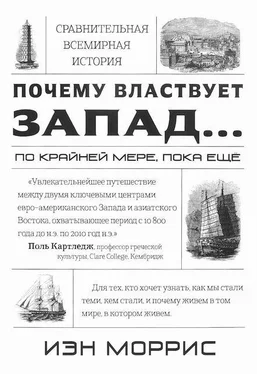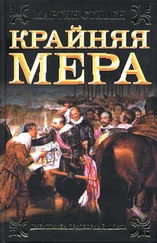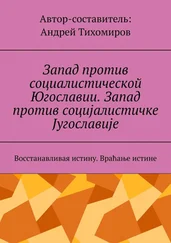Scheidel, Walter. Death on the Nile: Disease and the Demography of Roman Egypt. Leiden: E. J. Brill, 2001.
---. “A Model of Demographic and Economic Change in Roman Egypt After the Antonine Plague.” Journal of Roman Archaeology 15 (2002), pp. 97-114.
---. “A Model of Real Income Growth in Roman Italy.” Historia 56 (2007), pp. 322-46.
---. “Real Wages in Ancient and Medieval Economies: Evidence for Living Standards from 2000 BCE to 1300 CE to CE,” 2008. http://www.princeton.edu/~pswpc/index.html.
---, ed. Rome and China: Comparative Perspectives on Ancient World Empires. New York: Oxford University Press, 2009a.
---. “The Monetary Systems of the Han and Roman Empires.” In Walter Scheidel, ed., Rome and China, pp. 137-207. New York: Oxford University Press, 2009b.
---. “In Search of Roman Economic Growth.” Journal of Roman Archaeology 22, 2009c, pp. 46-70.
---. “Studying the State.” In Peter Bang and Walter Scheidel, eds., The Oxford Handbook to the Ancient State. Oxford: Oxford University Press, forthcoming.
Scheidel, Walter, Ian Morris, and Richard Sailer, eds. The Cambridge Economic History of the Greco-Roman World. Cambridge, UK: Cambridge University Press, 2007.
Schettler, G., and R. Romer. “Atmospheric Pb-Pollution by Pre-Medieval Mining Detected in the Sediments of the Brackish Karst Lake An Loch Mor, Western Ireland.” Applied Geochemistry 21 (2006), pp. 58-82.
Schmandt-Besserat, Denise. “’Ain Ghazal ‘Monumental’ Figures.” Bulletin of the American Schools of Oriental Research 310 (1998), pp. 1-17.
Scholz, Christopher, et al. “East African Megadroughts Between 135 and 75 Thousand Years Ago and Bearing on Early-Modern Human Origins.” Proceedings of the National Academy of Sciences 104 (2007), pp. 16416-21.
Schram, Stuart. The Political Thought of Mao Tse-Tung. New York: Praeger, 1969.
Schwartz, Benjamin. The World of Thought in Ancient China. Cambridge, MA: Harvard University Press, 1985.
Schwartz, Benjamin, ed. Wisdom, Revelation, and Doubt: Perspectives on the First Millennium BC. Special edition of Daedalus, spring 1975.
Schwartz, Glenn, ed. After Collapse. Tucson: University of Arizona Press, 2006.
Service, Elman. Primitive Social Organization. 1st ed. New York: Random House, 1962.
Shang, Hong, et al. “An Early Modern Human Tooth from Tianyuan Cave, Zhoukoudian, China.” Proceedings of the National Academy of Sciences 104 (2007), pp. 6573-78.
Shankman, Steven, and Stephen Durant, eds. The Siren and the Sage: Knowledge and Wisdom in Ancient Greece and China. London: Cassell, 2000.
Shanks, Michael, and Christopher Tilley. Social Theory and Archaeology. Cambridge: Polity Press, 1987.
Shapin, Steve. 1994. A Social History of Truth: Credibility and Science in Seventeenth-Century England. Chicago: University of Chicago Press, 1994.
---. The Scientific Revolution. Chicago: University of Chicago Press, 1996.
Shapiro, Judith. Mao’s War Against Nature: Politics and the Environment in Revolutionary China. Cambridge, UK: Cambridge University Press, 2001.
Shaughnessy, Edward. “Historical Perspectives on the Introduction of the Chariot into China.” Harvard Journal of Asiatic Studies 48 (1988), pp. 189-237.
---. Sources of Western Zhou History: Inscribed Bronze Vessels. Berkeley: University of California Press, 1991.
---. Before Confucius: Studies in the Creation of the Chinese Classics. Albany: State University of New York Press, 1997.
Shaw, Brent. “Seasons of Death: Aspects of Mortality in Imperial Rome.” Journal of Roman Studies 86 (1996), pp. 100-138.
Sheehan, James. Where Have All the Soldiers Gone? Boston: Houghton Mifflin, 2008.
Shelmerdine, Cynthia, ed. The Cambridge Companion to the Aegean Bronze Age. Cambridge, UK: Cambridge University Press, 2008.
Shen, Guanjen, et al. “U-Series Dating of Liujiang Hominid Site in Guangxi, Southern China.” Journal of Human Evolution 43 (2002), pp. 817-29.
---. “Mass Spectrometric U-Series Dating of Liabin Hominid Site in Guangxi, Southern China.” Journal of Archaeological Science 34 (2007), pp. 2109-14.
Shiba, Yoshinobu, and Mark Elvin. Commerce and Society in Sung China. Ann Arbor: University of Michigan Press, 1970.
Shklovskii, Iosif, and Carl Sagan. Intelligent Life in the Universe. San Francisco: Holden-Day, 1966.
Shlaes, Amity. The Forgotten Man: A New History of the Great Depression. New York: HarperCollins, 2007.
Short, Philip. Mao: A Life. New York: Owl Books, 1999.
Sim, May. Remastering Morals with Aristotle and Confucius. Cambridge, UK: Cambridge University Press, 2007.
Simms, Brendan. Three Victories and a Defeat: The Rise and Fall of the First British Empire. New York: Basic Books, 2008.
Sing, Chew. The Recurring Dark Ages. Walnut Creek, CA: AltaMira Press, 2007.
Singer, P. W. Wired for War: The Robotics Revolution and Conflict in the 21st Century. New York: Penguin, 2009.
Sivin, Nathan. “Why the Scientific Revolution Did Not Take Place in China—Or Didn’t It?” Chinese Science 5 (1982), pp. 45-66.
Slicher van Bath, B. H. The Agrarian History ofWestern Europe, AD 500-1850. London: Arnold, 1963.
Smelser, Neil, and Richard Swedberg, eds. The Handbook of Economic Sociology. 2nd ed. New York: Russell Sage Foundation, 2005.
Smil, Vaclav. General Energetics: Energy in the Biosphere and Civilization. New York: Wiley, 1991.
—--. Energy in World History. Boulder, CO: Westview Press, 1994.
---. Creating the Twentieth Century: Technical Innovations of 1867-1914 and Their Lasting Impact. New York: Oxford University Press, 2005.
---. Transforming the Twentieth Century: Technical Innovations and Their Consequences. New York: Oxford University Press, 2006.
---. Global Catastrophes and Trends: The Next Fifty Years. Cambridge, MA: MIT Press, 2008.
---. Why America Is Not a New Rome. Cambridge, MA: MIT Press, 2010.
Smith, Adam. “Writing at Anyang.” Unpublished PhD dissertation, University of California-Los Angeles, 2008.
Smith, Dennis. Japan Since 1945: The Rise of an Economic Superpower. London: St. Martins Press, 1995.
Smith, Grafton Elliot. The Migrations of Early Culture. Manchester, UK: Manchester University Press, 1915.
Smith, Michael. The Aztecs. 2nd ed. Oxford: Blackwell, 2003.
Smith, Paul. Taxing Heavens Storehouse: Bureaucratic Entrepreneurship and the Sichuan Tea and Horse Trade, 1074-1224. Cambridge, MA: Harvard University Press, 1991.
---. “Do We Know as Much as We Need to About the Song Economy? Observations on the Economic Crisis of the Twelfth and Thirteenth Centuries.” Journal of Sung-Yuan Studies 24 (1994), pp. 327-33.
Smith, Paul, and Richard von Glahn, eds. The Song-Yuan-Ming Transition in Chinese History. Cambridge, MA: Harvard University Press, 2003.
Smith, Richard. Chinese Maps: Images of “All Under Heaven.” New York: Oxford University Press, 1996.
Snell, Daniel, ed. A Companion to the Ancient Near East. Oxford: Blackwell, 2007.
So, Jenny. Eastern Zhou Ritual Bronzes from the Arthur M. Sackler Collections. Washington, DC: Smithsonian Institution, 1995.
So, Kwan-wai. Japanese Piracy in Ming China During the 16th Century. East Lansing: Michigan State University Press, 1975.
Spence, Jonathan. Emperor of China: Self-Portrait ofK’ang-hsi. New York: Vintage, 1974.
---. The Memory Palace of Matteo Ricci. New York: Penguin, 1983.
---. The Search for Modern China. New York: Norton, 1990.
---. God’s Chinese Son. New York: Norton, 1996.
Spencer, Herbert. “Progress: Its Law and Cause.” Westminster Review 67 (1857), pp. 445-85.
Stark, Miriam, ed. Archaeology of Asia. Oxford: Blackwell, 2006.
Stathakopoulos, Dionysios. Famine and Pestilence in the Late Roman and Early Byzantine Empire. Burlington, VT: Ashgate, 2004.
Читать дальше
Конец ознакомительного отрывка
Купить книгу




![Мартин МакДонах - Тоскливый Запад [=Сиротливый Запад]](/books/92360/martin-makdonah-tosklivyj-zapad-sirotlivyj-zapad-thumb.webp)







